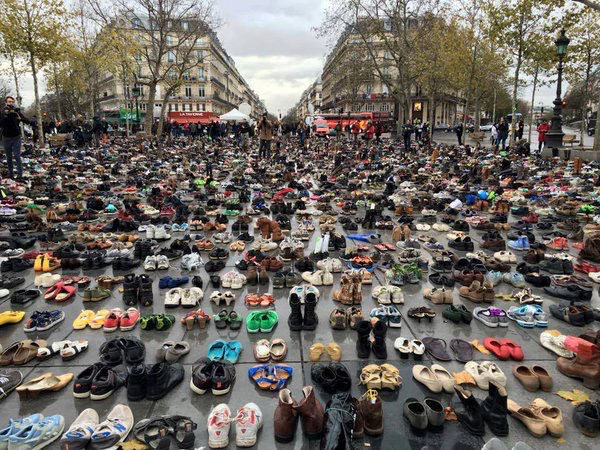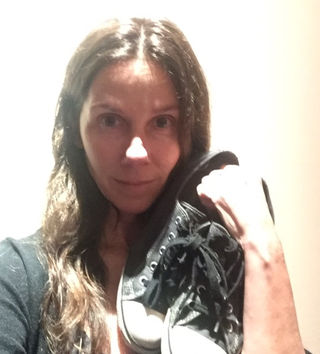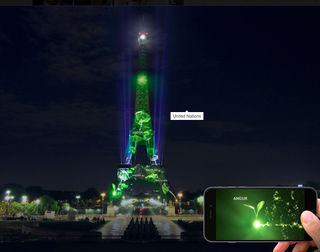Resilience
Choosing Hope Over Denial
Participating in campaigns like #EarthToParis can increase resilience.
Posted November 30, 2015

After the Paris attacks, the French government announced the cancellation of a massive climate march on November 29. How did the Parisian’s react? By lining the streets with their shoes.
That’s resilience.

Paris’ symbolic act of solidarity with climate marchers was powerfully received, so much so that the world reacted by joining them in a virtual march launched by Avaaz.org. The virtual march invited people to upload a photo of themselves with a pair of shoes and add a caption.
That’s community.
Resilience is made up of a cluster of character strengths and virtues. It isn’t studied in isolation because our ability to bounce back from adversity is tied to our relationships—with our families, communities, and cultures. Being resilient means we’re not stopped by adversity. We move forward with optimism and hope intact.
A few years ago, I met climate scientist, Michael Oppenheimer for coffee to talk about how we might inspire young people to become climate activists. Dr. Oppenheimer is the co-founder of the Climate Action Network and a lead participant of the Intergovernmental Panel on Climate Change (IPCC) which won the Nobel Peace Prize in 2007. In the 1980s, he and his colleagues organized two workshops that eventually led to negotiations that resulted in the United Nations Framework Convention on Climate Change. These were signed at the 1992 Earth Summit and the Kyoto Protocol in 1997. For more than four decades, Dr. Oppenheimer has been confronting the antagonism of climate change deniers.
That’s resilience.

Beginning today, 40,000 diplomats, experts and advocates, including more than 135 world leaders, are meeting in Paris for a major U.N. Climate Summit. The goal is a new global climate treaty—a treaty capable of helping the world avoid the worst consequences of human-caused global warming. COP21 is different that the 20 climate conferences that preceded it because we have the opportunity to respond with hope and optimism. Standing beside us, are millions of allies around the world—interconnected by the invisible threads of the World Wide Web. To help us connect, the United Nations Foundation, launched #EarthtoParis, a campaign designed to raise awareness and give us a way to join the dialogue. Let’s do our part to support Dr. Oppenheimer and the millions of other scientists and climate activists around the world. Facing our fears about climate change may not be easy. We may feel uncomfortable, even anxious. This is normal.

We can develop our own resilience during the roller coast ride of the climate change negotiations, by supporting our larger climate activist families, communities, and transitioning cultures. You can join artist, Naziha Mestaoui's participatory art project, 1Heart1Tree by using an app to plant a real tree. With music by Philip Sheppard, the artwork spans the online and offline worlds by creating a forest of light on the monuments of Paris during the UN Climate Conference. It offers spectators the ability to create a virtual tree of light using a heart beat sensor. For each virtual tree of light created, a real tree is actually planted in a reforestation project. You can watch your virtual tree growing on the app, to the rhythm of your own heartbeat. Links for Apple and Android below.
At Avaaz.org, you can join over 3.5 million extended family members, by signing the Mega Climate Petition. The #EarthToParis Anthem video has been viewed 6 million times and shared 94 thousand times. You can watch it here, and participate in the UN Thunderclap by taking action before December 7. And, if you want to do more, share your own thoughts with COP21 leaders by using the hashtags, #EarthToParis, #COP21 and #EarthActionNow on Twitter, Facebook, and Instagram.
That's a culture of resilience.
More Information:


